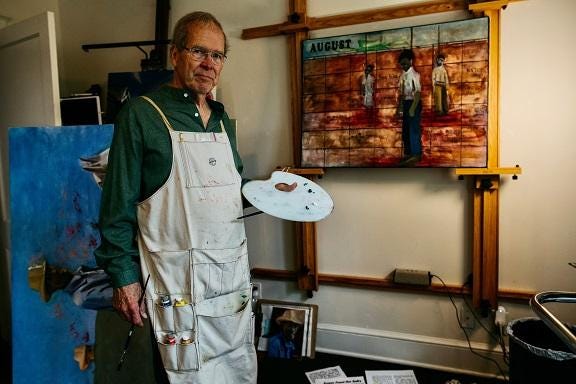|
 |
Tonight’s edition of “Five Questions” is one you definitely don’t want to miss. Our guest tonight is Dr. Andrew Sheldon, a public interest lawyer and psychotherapist in Georgia who also does work as a trial consultant. In 1994, prosecutors for the State of Mississippi asked Sheldon to consult in the trial of Byron De La Beckwith for the 1963 murder of civil rights leader Medgar Evers. This historic trial was the first of many seeking long-delayed justice for African Americans murdered by white supremacists during the civil rights era of the 1960s. Over the next 10 years, Sheldon participated in seven more trials of similar notorious cold cases from that era, including the bombing of Birmingham’s 16th Street Baptist Church, which killed four little girls, and the “Mississippi Burning” case, in which members of the Ku Klux Klan abducted and murdered civil rights activists James Chaney, Andrew Goodman, and Michael Schwerner.
Doug Jones, my former senator and also my boss when he was the U.S. Attorney in North Alabama, connected me with Sheldon and his colleague Doug Yarn, an emeritus professor of law at Georgia State who also practices and teaches conflict resolution. Yarn writes the Substack newsletter Yarn's Truth and Reconciliation—more about that in a minute. You’ll note that one of the cases Sheldon worked on was the murder of four girls in Birmingham that Jones successfully prosecuted as a cold case. Jones was on fire about some restorative justice work Sheldon and Yarn were doing together, and as soon as I got a look, I was too. I knew you all needed to see this. Restorative justice focuses on rehabilitating offenders through reconciliation with victims and the community at large, and can be very effective when done right, especially when it comes to civil rights.
Sheldon’s experiences as a trial consultant in some of the most important civil rights cases that have been prosecuted led him to co-found Southern Truth and Reconciliation (STAR), an organization whose goal is promoting justice and equity by addressing the legacy of racial violence. They are trying to heal entire communities. Along the way, Sheldon turned to painting as a way to process his reactions to the trials he was participating and his profound exposure to our history of racial violence. In a series of paintings collectively entitled “Denise’s Shoes,” for one of the four girls murdered in Birmingham, Sheldon shares his experience and connects all of us with this part of our history, one that some people would rather gloss over.
This weekend, Sheldon and Yarn will post “Denise’s Shoes” on Yarn’s Truth and Reconciliation, and you’ll be able to take it all in for free. Each painting is accompanied by Sheldon’s explanation. Yarn wrote an introduction to the series, which he posted this morning. In a week where we’ve discussed the demise of DOJ’s Civil Rights Division, this is the sort of uplifting news we need. Even though the subject is somber, art and culture can help to sustain democracy. That’s exactly what’s going on here. I’m delighted that we have the chance to discuss their work with Sheldon and Yarn tonight.
Tonight’s column is longer than usual, but I couldn’t bear to cut it. I’ve been thinking a lot about how art and culture intersect with democracy, how they can help us make sure it survives. Andy’s artwork and Doug’s Substack came at the perfect moment for me, and I have a feeling you’ll find a lot to think about here too.
“Five Questions” is a feature for paid subscribers to Civil Discourse. The rest of my posts are available to free subscribers as well. This is my “thank you” to the folks who support my work, so I can devote the necessary time and resources to it.

